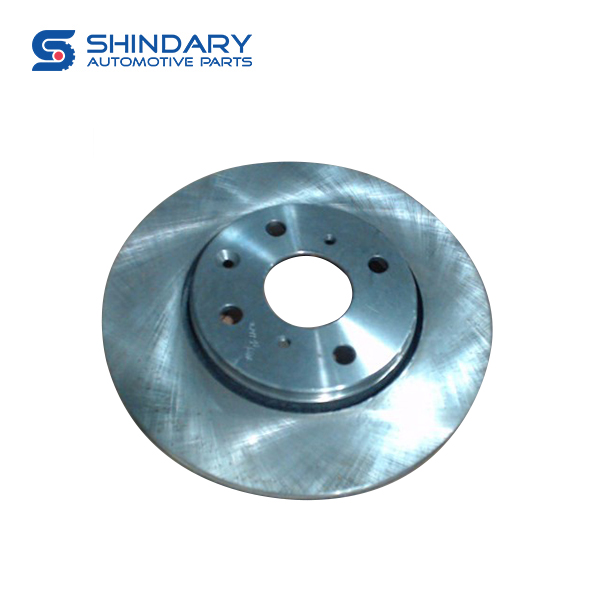Parts of a car clutch system and how they function
The car clutch system is a crucial component of a manual transmission, allowing the driver to engage and disengage the power transmission between the engine and the gearbox. It consists of several parts, each with a specific function. Here are the main parts of a car clutch system and their functions:
Clutch Pedal:
Function: The clutch pedal is the interface between the driver and the clutch system. When the driver presses the clutch pedal, it activates the mechanism that disengages the clutch, interrupting the power flow between the engine and the transmission.
Clutch Master Cylinder:
Function: The clutch master cylinder is typically located near the clutch pedal. When the clutch pedal is depressed, it pressurizes hydraulic fluid within the master cylinder. This pressurized fluid is then sent through the hydraulic line to the clutch slave cylinder.
Hydraulic Line:
Function: The hydraulic line connects the clutch master cylinder to the clutch slave cylinder. It allows the transmission of hydraulic pressure from the master cylinder to the slave cylinder, initiating the clutch engagement and disengagement process.
Clutch Slave Cylinder:
Function: The clutch slave cylinder is mounted on or near the transmission. When hydraulic pressure is transmitted from the master cylinder through the hydraulic line, the slave cylinder actuates the clutch fork, which, in turn, engages or disengages the clutch.

Clutch Fork:
Function: The clutch fork is a lever that pivots around a fulcrum point. It is actuated by the movement of the clutch slave cylinder. When the fork moves, it engages or disengages the clutch release bearing.
Clutch Release Bearing (Throw-out Bearing):
Function: The clutch release bearing is positioned on the clutch fork and makes contact with the pressure plate. When the clutch is engaged, the release bearing separates the pressure plate from the clutch disc, interrupting the power flow from the engine to the transmission.
Clutch Disc:
Function: The clutch disc is located between the flywheel and the pressure plate. It has friction material on both sides. When the clutch is engaged, the disc is pressed against the flywheel, transmitting power from the engine to the transmission. When the clutch is disengaged, the disc is released, interrupting the power flow.
Pressure Plate:
Function: The pressure plate is bolted to the flywheel and exerts pressure on the clutch disc. When engaged, it presses the clutch disc against the flywheel, allowing power transmission. When disengaged, it releases the pressure, separating the clutch disc from the flywheel.
Additional reading:How to Make Buying a Car Not Suck
How Do Electric Adventure Bikes Work?
How to Choose the Right Electric Two Wheeler Exporter?
5 Must-Have Features in a 8.5 inch solid scooter tyres
How to Master Fast Moped Fabrication Techniques?
Key Questions to Ask When Ordering a Moped for Sale for Adults
Reducing the stiffness of a spring?
Flywheel:
Function: The flywheel is connected to the engine's crankshaft and provides a rotating mass. It engages with the clutch disc and, when the clutch is engaged, allows the transmission of power from the engine to the transmission.
The Operation Sequence:
Engagement (Clutch Released):
The driver releases the clutch pedal.
The pressure plate presses the clutch disc against the flywheel.
Power is transmitted from the engine to the transmission, enabling the vehicle to move.
Disengagement (Clutch Depressed):
The driver presses the clutch pedal.
The clutch master cylinder pressurizes hydraulic fluid.
Hydraulic pressure is transmitted to the clutch slave cylinder.
The slave cylinder actuates the clutch fork.
The clutch fork moves the clutch release bearing.
The release bearing separates the pressure plate from the clutch disc.
Power transmission between the engine and transmission is interrupted.
This sequential operation allows the driver to smoothly change gears and control the power flow between the engine and the transmission in a manual transmission vehicle.
The Best Places to Buy Chameleon Car Wrap Online and In-Store
How to Find Affordable Electric Scooters for Adults?
Car Wrap Cost: How Much Does it Cost to Wrap a Vehicle?
Revolutionizing Travel: The Future of Electric Moped Manufacturing
How Electric Moped Manufacturing Transforms Urban Transport?
10 Things to Consider When Buying chinese ev companies
4 Tips to Select the Perfect Electric Moped Solution
Related Articles
-
How Does the CAVALIER Oil Seal Solution Improve Performance?
-
10 Benefits of Choosing AVEO Brake & Clutch Cylinder Solutions for Your Vehicle
-
How Does the Shacman Mixer Truck Overcome Common Operating Challenges?
-
What Are the Advantages of China Auto Parts Supplier?
6
0
0
-
Overcoming Logistics Challenges: Why Shacman Military Trucks are the Game Changer You Need
-
Essential Solutions for Common Issues in Engineering Construction Trucks



Comments
0